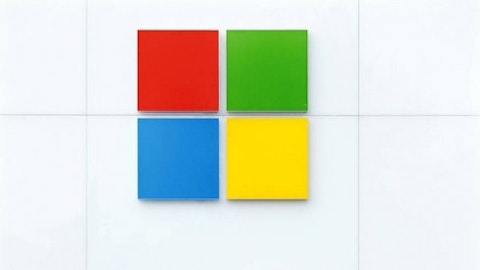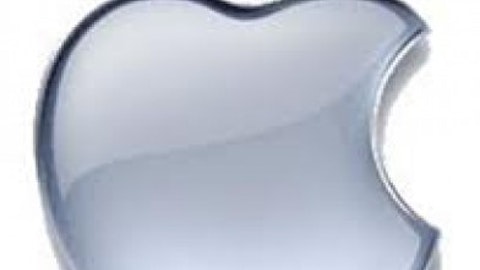The handset business
And even if you take into account Nokia’s bread-and-butter handset business, everyone knows that the company has long lost its previous dominance in this area thanks to companies such as Apple Inc. (NASDAQ:AAPL) and Samsung Electronics Co., Ltd. (KRX:005930) that have emerged as the current market leaders by an overwhelming margin. In fact, Nokia’s current share of overall global handset sales dropped from 19.7% to 14.8% within the span of a single year. That translates to a substantial 24% decline in sales, as opposed to a 16% increase in sales for Apple Inc. (NASDAQ:AAPL), with Samsung Electronics Co., Ltd. (KRX:005930) following closely behind with an increase of 13%. Just another reason why an alternate and steady source of revenue in the form of NSN has become essential for a company like Nokia.
Apple’s own set of headaches
On the other hand, Cupertino-based Apple Inc. (NASDAQ:AAPL), the company originally credited with having displaced Nokia as the undisputed global smartphone king, is living with its own set of problems. The very fact that Apple has failed to come out with any new product for quite some time now is giving goosebumps to Apple investors, despite all the assurances given by CEO Tim Cook. That aside, Apple is trying to distance itself as much as it can from arch rival Samsung Electronics Co., Ltd. (KRX:005930), as the two remain embroiled in patent battles in several regions around the world. The latest development in this regard has been Apple’s tie-up with Taiwan Semiconductor Mfg. Co. Ltd. (ADR) (NYSE:TSM) as its future chip supplier, in an obvious rebuff to Samsung that has remained a dominant supplier till now.
The feature phone issues
Coming back to Nokia and its problems in the handset arena, they can be specifically categorized into those related to its feature phone and smartphone divisions, respectively. With regard to feature phones, Nokia had initially benefited a lot from the launch of its Asha range of handsets in emerging nations such as India. The Asha branded handsets, while essentially being feature phones themselves, offered a limited suite of smartphone-based features as well. This, along with the average sub-$100 pricing of these handsets, greatly contributed to the rapid rise in their popularity.
However, that scenario is now turning out a bit differently. A recent Gartner report has revealed that declining sales of its feature phone range has contributed to a drop in Nokia’s share of overall handset sales. In fact, the company’s sale of touch-based Asha phones have dropped substantially from 9.3 million units in the fourth quarter of 2012 to around 5 million units in Q1 2013. While analysts are providing a number of reasons for this decline, including the emergence of cheaper Android-based alternatives, coupled with the fact that consumers are probably not willing to part ways with their beloved feature phones for now, this has definitely led to grim faces at Nokia.
Smartphones are not faring any better
And although the situation seems to be slightly better on the smartphone front, with the company claiming to have sold 5.6 million Lumia units in its first quarter this year compared to 4.4 million units in the prior one, Nokia has actually dropped down to No. 10 position in the global smartphone market (as of Q1 2013). At the same time, with smartphones now accounting for a greater share of global handset sales, Nokia knows it does not have much time on its hands, giving the handset major another reason to look at an alternate and less fluctuating source of revenue.
It can’t get worse than BlackBerry
At the same time, Nokia investors can take heart from the fact that the company is actually much better positioned than close competitor and fellow smartphone manufacturer RES.IN MOT.DBA BLACKBERRY (FRA:RI1). The prospects of Canada-based RES.IN MOT.DBA BLACKBERRY (FRA:RI1), once acclaimed as the original inventor of on-the-hip email facilities in mobile phones, have now hit rock bottom. This has largely been the result of the company’s latest quarterly results that have revealed far lower-than-expected sales of its new BB10 based handsets, along with a sharp dip in the subscriber base.
Some final thoughts
On the whole, the NSN deal was a much-needed move on the part of Nokia, and something that should bring a welcome smile in the faces of potential investors as well. While it’s an acknowledged fact that any transition into a new mobile ecosystem (such as the Windows 8 phone operating system that powers the Lumias) does take some time, the good thing is that the company is recording a slow but steady increase in popularity for its Lumia line of phones.
On the other hand, certain recent moves by Nokia that involve bringing out an amazingly low-priced $20 phone (the Nokia 105) can indeed prove to be an effective counter to the recent decline in sales of its feature phone line. This is one stock that you certainly should hold onto for the long term, as Nokia is nowhere near finished as yet and we may well see a few more bright sparks on the horizon in the near future.
Subhadeep Ghose has no position in any stocks mentioned. The Motley Fool recommends Apple. The Motley Fool owns shares of Apple. Subhadeep is a member of The Motley Fool Blog Network — entries represent the personal opinion of the blogger and are not formally edited.
The article Nokia: No Risk, No Gain originally appeared on Fool.com is written by Subhadeep Ghose.
Copyright © 1995 – 2013 The Motley Fool, LLC. All rights reserved. The Motley Fool has a disclosure policy.



